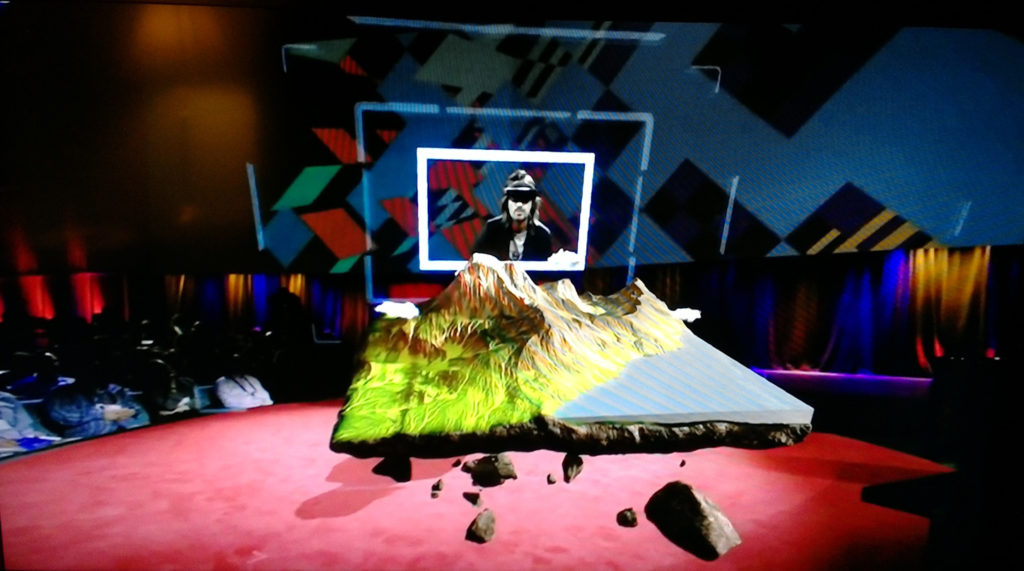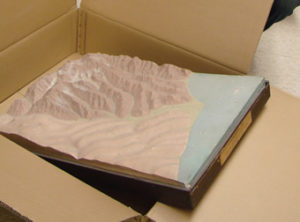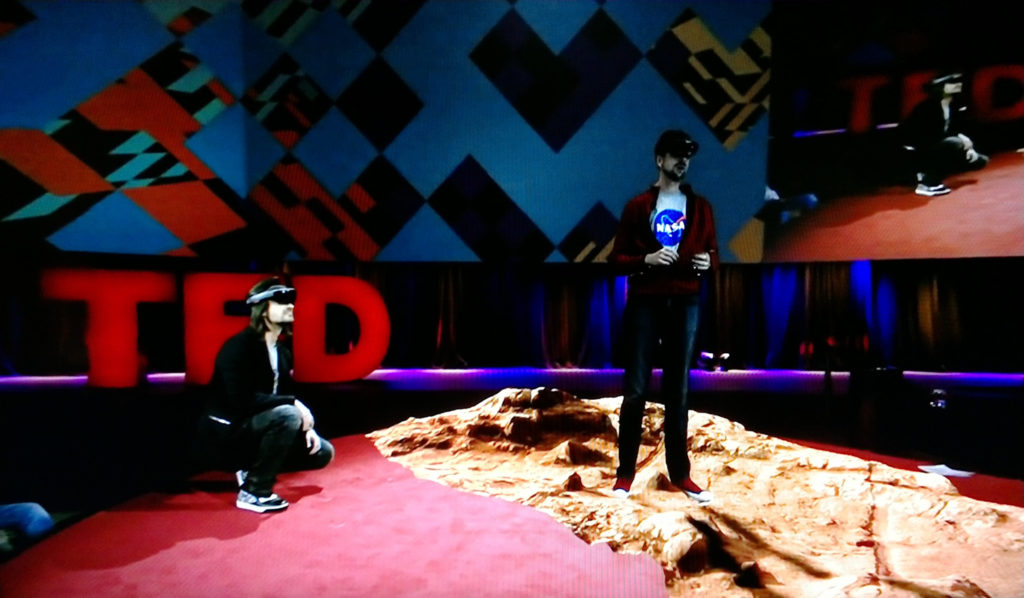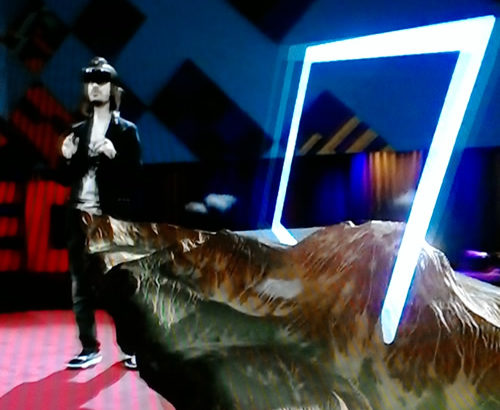Geography lovers: prepare to be delighted. If much of the futuristic mapping technology in the news puts you off as too impractical, this TED talk by Alex Kipman seems downright practical.
Kipman is an alumnus of the Rochester (NY) Institute of Technology–the same high-tech city that gave the subject of my book, Edwin Howell, his start in the 1870s in relief modeling and simulated landscape reality. Rochester was high tech in 1870 and still is today. (What is it about Rochester that brings out this creative spatial thinking?)


1897 Harvard relief model from Wm Davis photographed at University of Wisconsin-Whitewater. Photo by Melanie McCalmont
Kipman’s TED talk demonstrated Microsoft’s HoloLens and how digital holograms work. Wearing the HoloLens, Kipman popped out a beautiful digital relief model–complete with flat sea level. The hologram picked up where modeler Edwin Howell left off–you could visualize the geology under the landscape, the ocean bottom and, where Howell’s models had but one terrain surface, Kipman’s could be rotated and zoomed digitally. It also reminded me of the Howell-inspired 1897 Harvard models (see inset at right).
The best part was the terrain hologram at scale. A NASA engineer demonstrated with Kipman and showed how they can use holographic point clouds to reproduce the Martian landscape so that astrogeologists can walk through and examine the terrain from any angle, set down markers for future exploration.
I find it terribly ironic and (geographically) satisfying that, despite the holographic medium, a terrain model is the best demonstration article of choice in 2016. Other articles on this blog point out the same impulse at the beginning of a new technological breakthrough: to make a globe, terrain, and land model.
This HoloLens technology is the direct descendent of Edwin Howell’s 3D physical relief models. Both of them attempted to give us the experiential feel for a place along with the science layer that stimulates us intellectually. These holographic models continue the lineage of map UX–the main reason that Howell created his models. Whether the medium is 2016 virtual reality (VR) or 1916 plaster, these models are designed to let us experience the beauty and the understand the science simultaneously.


